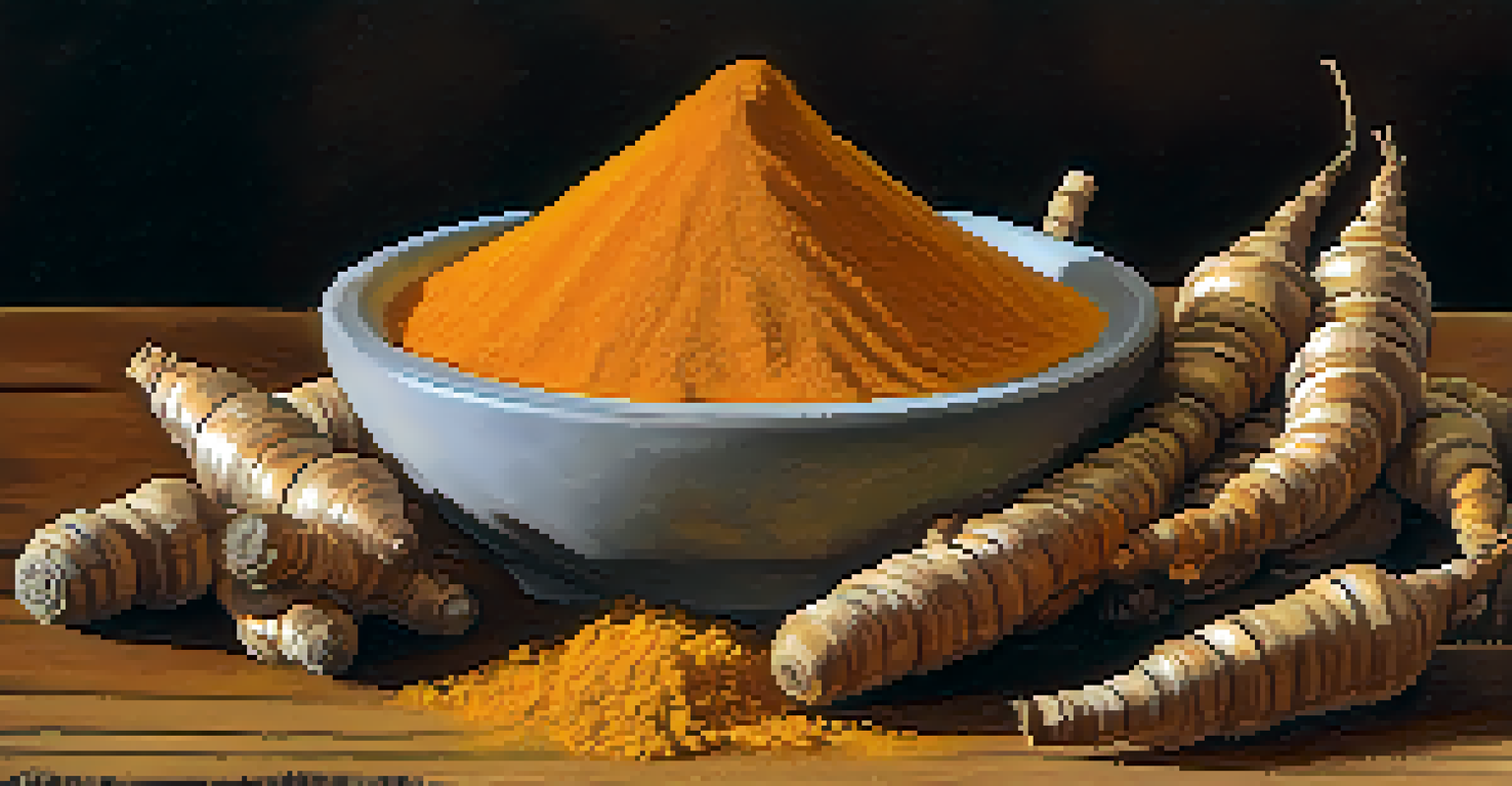The Role of Medicinal Plants in Traditional Healing Practices

Understanding Medicinal Plants and Their Importance
Medicinal plants have been a cornerstone of healing practices worldwide for centuries. They are often the first line of defense against ailments in many cultures, providing natural remedies that are both effective and accessible. The use of plants for healing is rooted in the belief that nature offers solutions to our health issues, often with fewer side effects than synthetic medications.
The greatest medicine of all is teaching people how not to need it.
In traditional systems of medicine, such as Ayurveda and Traditional Chinese Medicine, these plants are not just ingredients but are considered sacred. They embody a deep understanding of the body and its connection to nature, supporting the idea that holistic healing can be achieved through natural means. This philosophy emphasizes the importance of balance, both physically and spiritually.
Moreover, modern science is beginning to validate these ancient practices. Research continues to uncover the active compounds in these plants, demonstrating their effectiveness in treating various conditions. This growing body of evidence is helping to bridge the gap between traditional and modern medicine, leading to a greater appreciation for the role of medicinal plants.
Cultural Significance of Medicinal Plants
Medicinal plants are deeply intertwined with cultural identities and traditions. Many indigenous communities have developed a rich knowledge of local flora, using it for generations to treat ailments and enhance well-being. This deep-rooted understanding is often passed down through oral traditions, highlighting the plants' significance not just as medicinal agents but as cultural treasures.

For example, in Native American traditions, plants like sage and sweetgrass are used in ceremonies and healing rituals. These practices demonstrate how plants are woven into the fabric of community life, serving both spiritual and physical purposes. Similarly, in the Mediterranean, herbs like rosemary and thyme are celebrated for their healing properties, often integrated into culinary practices.
Medicinal Plants: Nature's Healers
Medicinal plants have been essential in healing practices, offering natural remedies with fewer side effects than synthetic medications.
This cultural significance not only preserves the knowledge of these plants but also fosters a sense of respect for nature. Communities that rely on medicinal plants often advocate for sustainable harvesting practices, ensuring that these valuable resources remain available for future generations. Such practices highlight the interconnectedness of health, culture, and the environment.
Common Medicinal Plants and Their Uses
Several medicinal plants have gained popularity due to their versatile healing properties. For instance, ginger is widely recognized for its anti-inflammatory effects, often used to relieve nausea and digestive issues. Similarly, chamomile is cherished for its calming properties, making it a go-to remedy for anxiety and sleep disorders.
Nature itself is the best physician.
Another notable plant is turmeric, which contains curcumin, known for its powerful antioxidant and anti-inflammatory benefits. It's often used in traditional remedies to support joint health and overall wellness. These plants showcase how everyday ingredients can be potent allies in maintaining health and treating ailments.
The beauty of these plants lies in their accessibility; many can be grown in home gardens or found in local markets. This accessibility empowers individuals to take charge of their health, promoting self-care and natural remedies. By integrating these plants into daily routines, people can harness the healing power of nature in their lives.
The Science Behind Traditional Healing Practices
While traditional healing practices have been around for centuries, scientific research is now uncovering the reasons behind their effectiveness. Many medicinal plants contain bioactive compounds that have been shown to interact positively with the human body. For example, the active ingredient in willow bark is salicin, which is chemically similar to aspirin, explaining its pain-relieving properties.
Studies have also explored the mechanisms by which these plants work at a cellular level, helping to validate traditional knowledge. This scientific backing not only enhances our understanding but also fosters a dialogue between traditional healers and modern healthcare professionals. Together, they can create a more comprehensive approach to health and wellness.
Cultural Heritage and Healing
Many communities hold deep cultural knowledge of medicinal plants, using them not only for health but also as integral parts of their traditions.
Moreover, this intersection of science and traditional practices encourages the preservation of indigenous knowledge. By documenting and researching these ancient practices, we can ensure that valuable healing traditions are not lost to time. This collaboration ultimately enriches both fields, leading to innovative and holistic approaches to health.
Challenges Facing Traditional Healing Practices
Despite their rich heritage, traditional healing practices face several challenges today. One significant issue is the loss of biodiversity, as many medicinal plants are endangered due to habitat destruction and overharvesting. This loss not only threatens the plants themselves but also the cultural knowledge associated with them, as communities may lose access to their traditional medicines.
Additionally, the rise of Western medicine has led to a decline in the use of traditional remedies in some regions. Many people are opting for pharmaceutical drugs, often overlooking the benefits of natural alternatives. This shift can create a disconnect between generations, as younger individuals may not learn about the healing properties of local plants.
Another challenge is the need for regulation and standardization in the use of medicinal plants. While some plants are safe and effective, others can be harmful if not used properly. Establishing guidelines for the responsible use of these plants can help ensure their safety and efficacy, bridging the gap between traditional knowledge and modern health practices.
The Future of Medicinal Plants in Healthcare
Looking ahead, the role of medicinal plants in healthcare is poised to evolve significantly. As more people seek natural and holistic alternatives to pharmaceuticals, there is growing interest in integrating these plants into mainstream medicine. This shift could lead to the development of new treatments that combine the best of both worlds: the wisdom of traditional healing and the advancements of modern science.
Moreover, ongoing research into the benefits of medicinal plants is likely to expand our understanding of their potential applications. With the help of technology, scientists can now study these plants at a molecular level, uncovering new compounds and their effects on human health. This research can pave the way for innovative therapies that are both effective and rooted in nature.
Future of Traditional Healing
The integration of medicinal plants into modern healthcare is growing, highlighting the potential for innovative treatments that respect traditional practices.
Ultimately, the future of medicinal plants in healthcare hinges on collaboration. By fostering partnerships between traditional healers and scientific researchers, we can create a more inclusive approach to health. This collaboration not only respects the rich heritage of traditional healing but also promotes a sustainable future for medicinal plants and the communities that rely on them.
Preserving Traditional Knowledge and Practices
Preserving traditional knowledge and practices surrounding medicinal plants is crucial for future generations. This involves documenting the uses and benefits of these plants, as well as the cultural practices associated with them. By recording this information, we can create a valuable resource that educates and empowers communities, ensuring that this knowledge is not lost.
Additionally, engaging younger generations in learning about medicinal plants can help rekindle interest in traditional healing practices. Schools and community programs can introduce children to local flora and their uses, fostering a sense of connection to nature. This not only promotes environmental stewardship but also instills respect for cultural heritage.

Finally, supporting sustainable practices in the harvesting and use of medicinal plants is essential. Communities can establish guidelines that protect these resources while allowing them to thrive. By prioritizing sustainability, we ensure that future generations can continue to benefit from the healing power of nature.